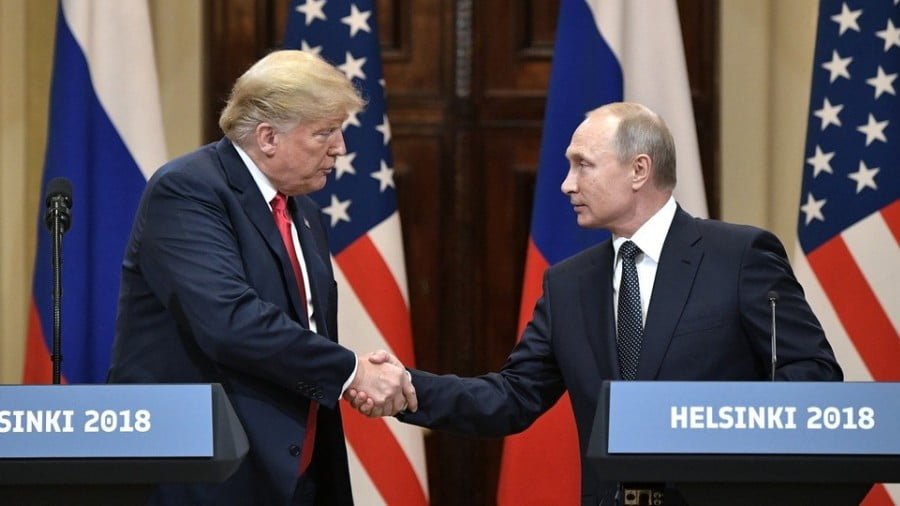US Strike on Syrian Forces: The Scramble for Post-Islamic State Syria
The recent strike on a Syrian military convoy within Syrian territory by US military forces represents another incremental escalation by Washington within the region, and another example of American unilateral military aggression worldwide.
The tactical scope of the attack was relatively limited, but strategically, the stakes particularly along Syria’s territorial boundaries have been raised significantly.
Regarding the attack, US geopolitical analysts appear unanimous regarding the rhyme and reason behind it.
Foreign Policy magazine in a recent article claimed that the strike “showed American commanders are willing to use force to maintain de facto safe zones in the country’s east.” The article also attempts to claim these “safe zones” are being used to stand up forces to fight the Islamic State.
In reality, the Islamic State was a creation of the US and its regional allies and meant specifically to “isolate the Syrian regime,” according to a 2012 US Defense Intelligence Agency report.
Considering this, the Islamic State’s presence in Syria and narratives depicting US efforts as being aimed at fighting the terrorist front are simply being used as rhetorical cover for the more obvious and original purpose of US intervention, regime change in Damascus.
By attacking Syrian forces and asserting US control over Syrian territory, Washington is attempting to permanently “isolate” Damascus even further.
The Atlantic was even more specific in its analysis.
It’s article, “The Scramble for Post-ISIS Syria Has Officially Begun,” states clearly:
[The strikes] sent a message that the area around the base—al-Tanf in southeastern Syria, near the borders with Iraq and Jordan—was an “American sphere of influence and area of operations.”
The article also claimed:
Just as Assad and Iran look to be winning the ground war in Syria, the U.S. and its Syrian opposition partners in the south have intensified their own anti-ISIS activities, exerting more and more of an influence and presence in the south.
Of course, if “Assad and Iran” are poised to win the ground war in Syria, that includes the defeat of the Islamic State, which in theory would mean Washington should be augmenting Damascus and Tehran’s efforts, not impeding them with military strikes that not only tactically setback forces fighting the Islamic State and other extremist groups, but also raises the risk of a wider regional war between Washington, Damascus, Tehran and even Moscow that would create more extremism, not less.
US is Using the Islamic State as a Pretext for Regime Change
In reality, however, Washington is not interested in defeating the Islamic State, but rather using the terrorist front’s existence in Syria as a pretext for the incremental expansion of both its military presence in Syria and its use of military force directly against the government in Damascus where indirect methods (including the use of the Islamic State itself) have failed to topple it.
Still, both Foreign Policy and The Atlantic, along with many others within US foreign policy circles admit that these activities will only be useful in establishing “safe zones” along Syria’s peripheries, not expedient regime change.
However, US policymakers have long planned to use such “safe zones” as starting points for a much more patient and long-term “deconstruction” of the Syrian nation-state. In fact, explicit plans to do so are included in a 2015 Brookings Institution report literally titled, “Deconstructing Syria: Towards a regionalized strategy for a confederal country.”
Plans to “gradually expand” territory seized from Syria by US forces and its allies go back even further, to 2012, before the Islamic State even rose to prominence. Reports like Brooking Institution’s March 2012 “Middle East Memo #21: Saving Syria: Assessing Options for Regime Change,” reveal that US intentions are not to fight terror or an “Islamic State” that didn’t even exist at the time, but simply to achieve “regime change.”
The aforementioned articles from Foreign Policy and The Atlantic attempt to frame US operations in Syria as “anti-terrorist” in nature, only alluding to obvious attempts by the US to carve out and permanently hold Syrian territory before the conflict concludes.
The Atlantic even references Iranian claims of a “US plot’ to establish a buffer zone in southern Syria ‘to protect terrorists.’”
If, as the US admits, the Syrian government is engaged in combat operations against the Islamic State and other US designated terrorist organizations, then for what other purpose could these “safe zones” be used but to harbor terrorists who would otherwise be liquidated upon the conflict’s conclusion in favor of the government in Damascus?
Acknowledging that nothing of the sort in regards to “moderate rebels” actually exists in Syria, what options would the US have regarding desired regime change upon the Islamic State and other extremist groups’ liquidation? Thus, Iranian claims represent the most sober and realistic analysis included in The Atlantic’s article.
The truth is fully revealed and reaffirmed with each and every US strike upon Syrian forces, that terrorism as it was in Iraq, Libya, Yemen and Afghanistan, was likewise brought to Syria by the US for the explicit purpose of fighting a proxy war against Damascus and failing that, serving as a pretext for an enduring US military presence within the country and for direct US military aggression against the government in Damascus itself.
With the US currently sealing an unprecedented armament deal with Riyadh, noted by both US intelligence agencies and prominent US political leaders as one of the premier state sponsors of terrorism (including of both Al Qaeda affiliates and the Islamic State itself in Syria) in the world, claims that its military presence in Syria is aimed at “defeating the Islamic State” begs belief.
By Ulson Gunnar
Source: New Eastern Outlook







